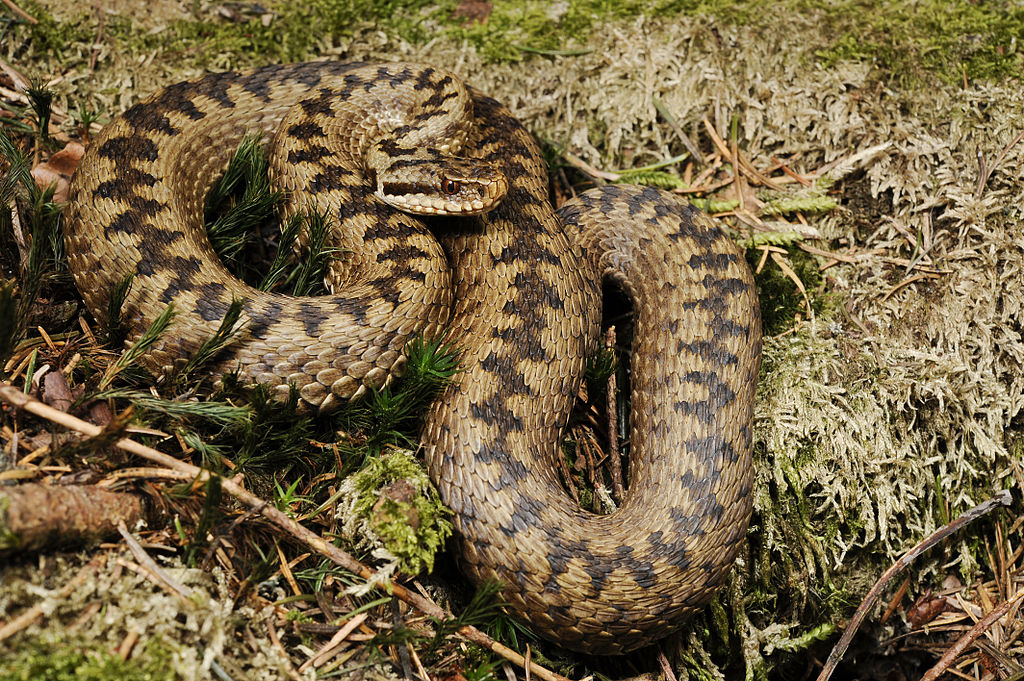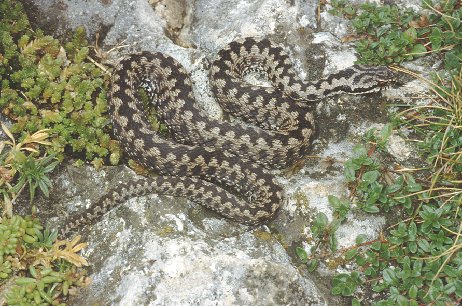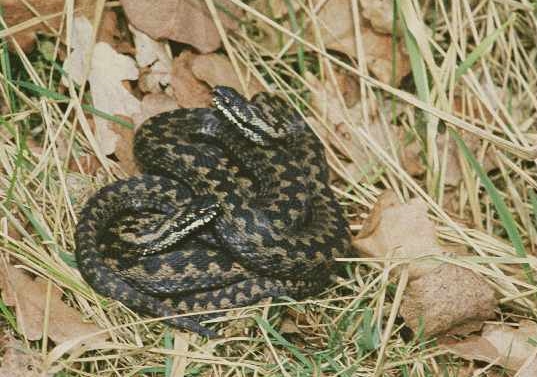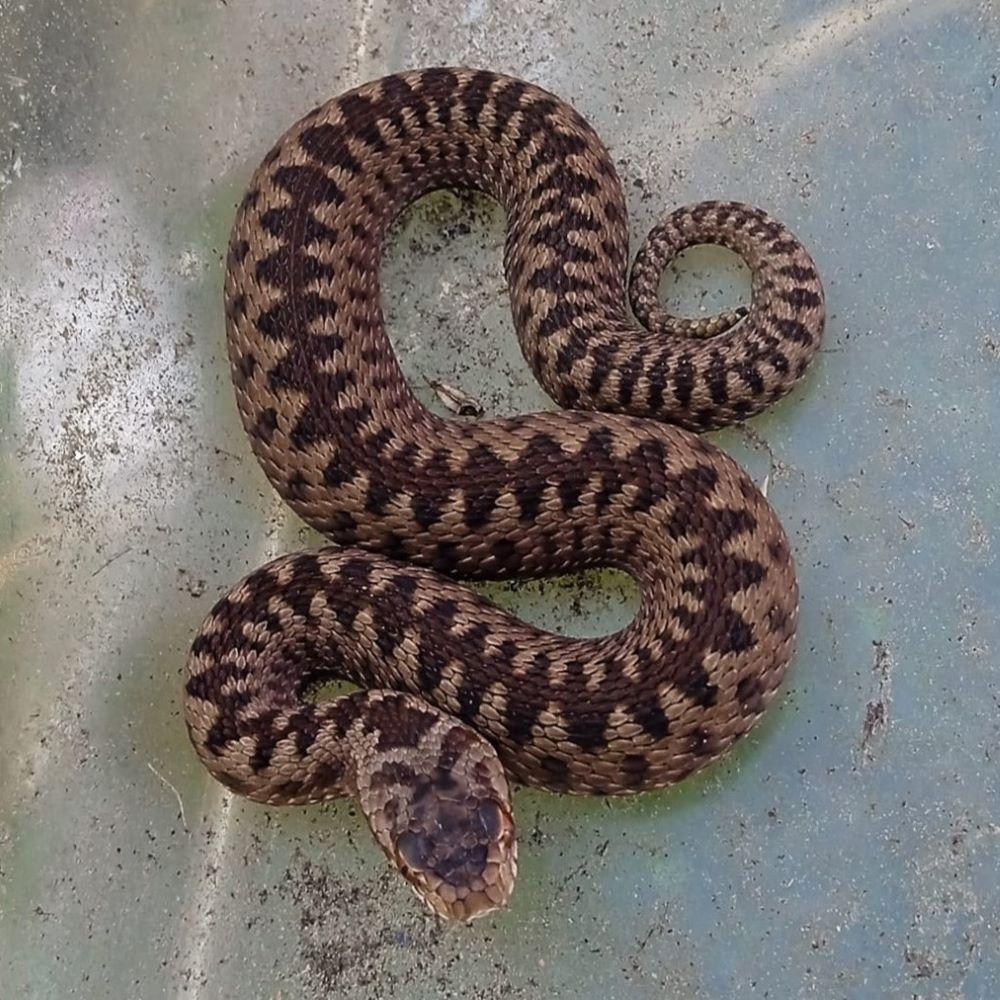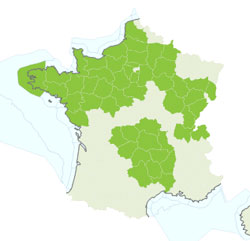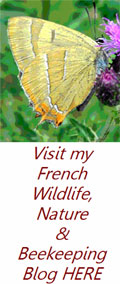Common adder
Vipera berus
Vipère péliade
They have a stocky body, a slightly flattened head and are round nosed.
It is a species that lives in a variety of habitats
this includes chalky downs, rocky hillsides, moors, sandy heaths, meadows, rough commons, edges of woods, sunny glades, clearings, scrub-land. They can also be found in salt marshland but are not to be found in the warmer parts of France and as such it is likely that their range is decreasing with climate change.
They are in common with most other vipers Ovoviviparous giving birth to between 4 to 10 young with a size varying from 14 to 22 cm once a year.
Prey, which is sought at dawn and dusk as a general rule, consists of small mammals, birds, amphibians, insects and lizards. Unlike other vipers they are good swimmers and often takes to the water.
Hibernation takes place underground and is from November until February with males becoming active before the females.
Adders are not usually aggressive
tending to be rather timid and biting only when cornered or alarmed and as such people are generally only bitten after stepping on them or attempting to pick them up. They will usually disappear into the undergrowth at any hint of danger but can often return to the same favoured spot.
All French snakes are fully protected species
It's probable that the Common Adders range is less than shown on this map and will be increasingly rare in some places. There have been severe declines in their numbers with them being elevated to the status of endangered in some French regions where they were once relatively common.
